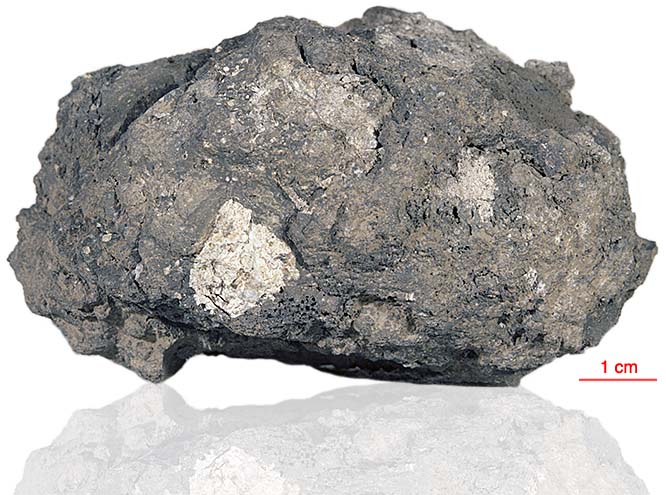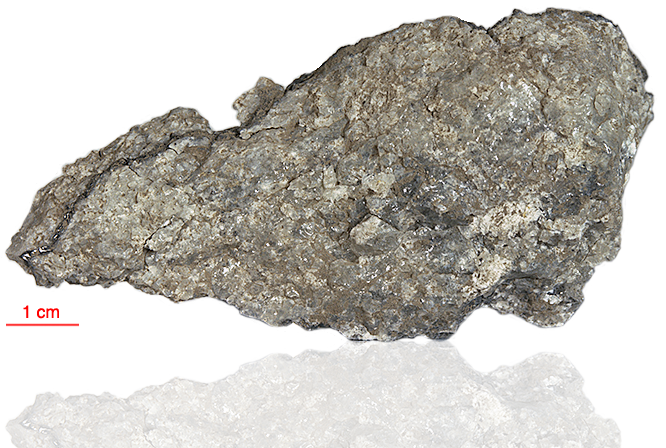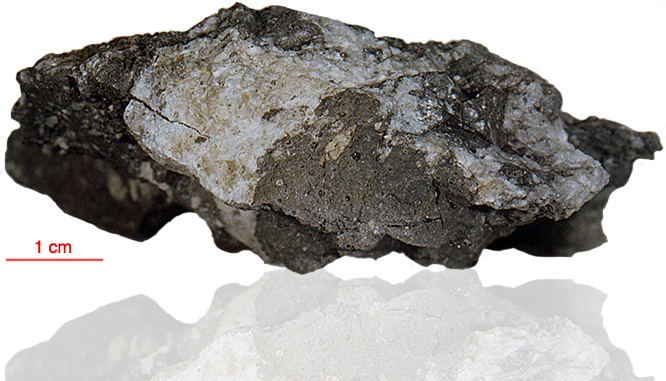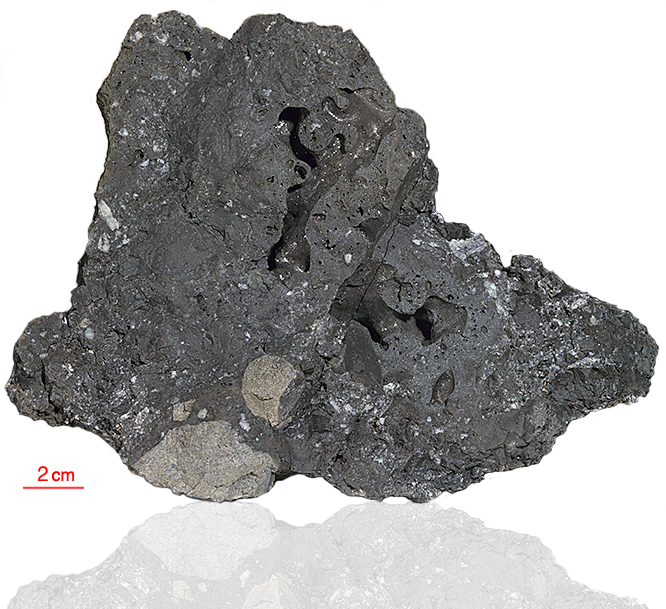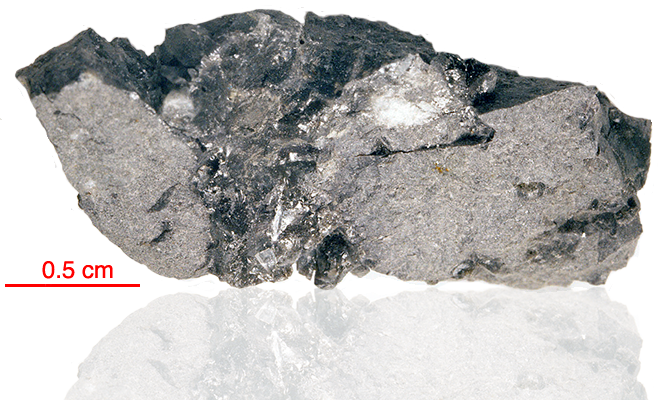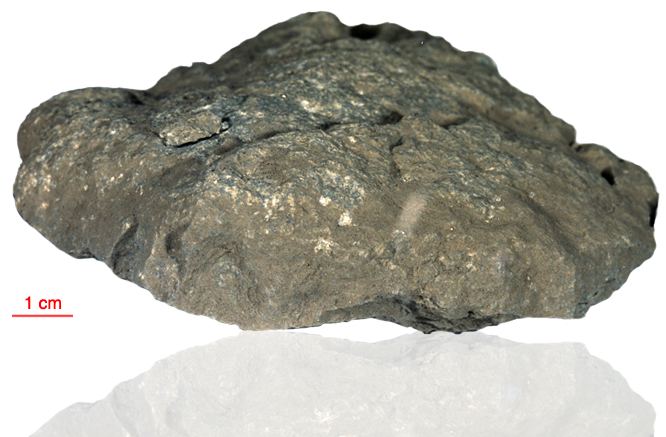
Fact sheet
60315 is holocrystalline and dense (almost igneous), but contains significant siderophile content and relict anorthite xenocrysts indicating that it is a recrystallized impact melt. It has a poilkilitic texture composed of a mesh of relatively large oikocrysts of orthopyroxene which enclose abundant laths and clasts of plagioclase, rare olivine, pink spinel (rotation 1) and opaques. Augite, olivine, ilmenite and armalcolite rim some pyroxene oikocrysts and/or make up the interstices between oikocrysts. The oikocryst boundaries are best seen between crossed polars. Metallic iron is also present. Rounded vesicles are common.
The sample weighed 787 grams before analysis and has recently been dated at 3.868±0.031 billion years (Ar/Ar).
Further details of this and other Apollo samples are here: http://curator.jsc.nasa.gov/lunar/
[Siderophile - an element with a weak affinity for oxygen and sulphur and that is readily soluble in molten iron; includes iron, nickel, cobalt]
The Apollo 16 landing site was in the hilly region around Descartes crater in the lunar highlands. The landing spot was chosen to allow the astronauts to gather geologically older lunar material (Descartes Formation and the Cayley Formation) than the samples obtained in the first four landings, which were in or near lunar maria.
The mission lasted 11.1 days, with a stay on the lunar surface of 71 hours. The crew were on the lunar surface for 20.2 hours during which they traversed approximately 27 kilometers and collected approximately 96 kilograms of samples.
Apollo 16 was launched on 16 April 1972.
